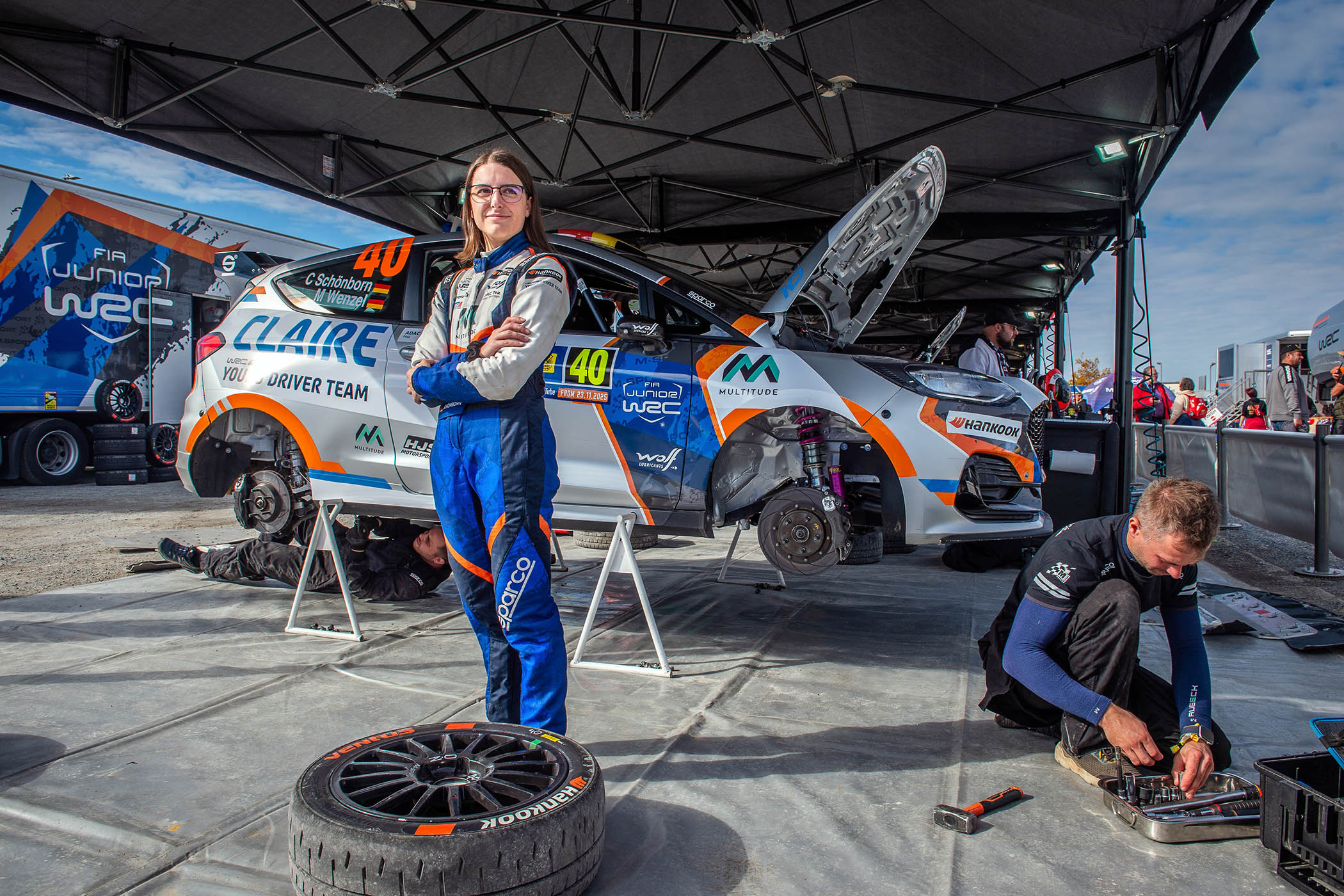Photographs by Craig Stennett for The Observer
The mist has barely lifted over the damp valley around the German village of Giessübel but the stage side is already lined with eager puffer coat-clad spectators bearing flags, camp chairs and open beer cans. About 650 metres up a grassy slope, the waft of burger buns, manure and exhaust fumes lingers in the air as fans peer around the hairpin bend.
The roar of engines announce the cars well before they shoot over the first hill and greet the crowd.
At the third stage of the Central European Rally, the competition has barely begun for the drivers facing the 18-stage endurance and speed race this weekend.
A series of tight corners and steep climbs awaits them: the only evidence left in their wake are layers of black rubber marks engraved on the well-ridden tarmac.
This is a manoeuvre Claire Schönborn, has spent hours carefully preparing with her team: “ I am really hard with myself, so I want to be as best as I can every time,” she said. At 26, Schönborn is Germany’s hope for the future. She also bears another weight on her shoulders as the only female driver in this competition. While there are seven female co-drivers across levels from junior to Rally2 and plenty more working on the cars as technicians, race directors or event organisers, women are less visible behind the wheels, or on the highlight reels.
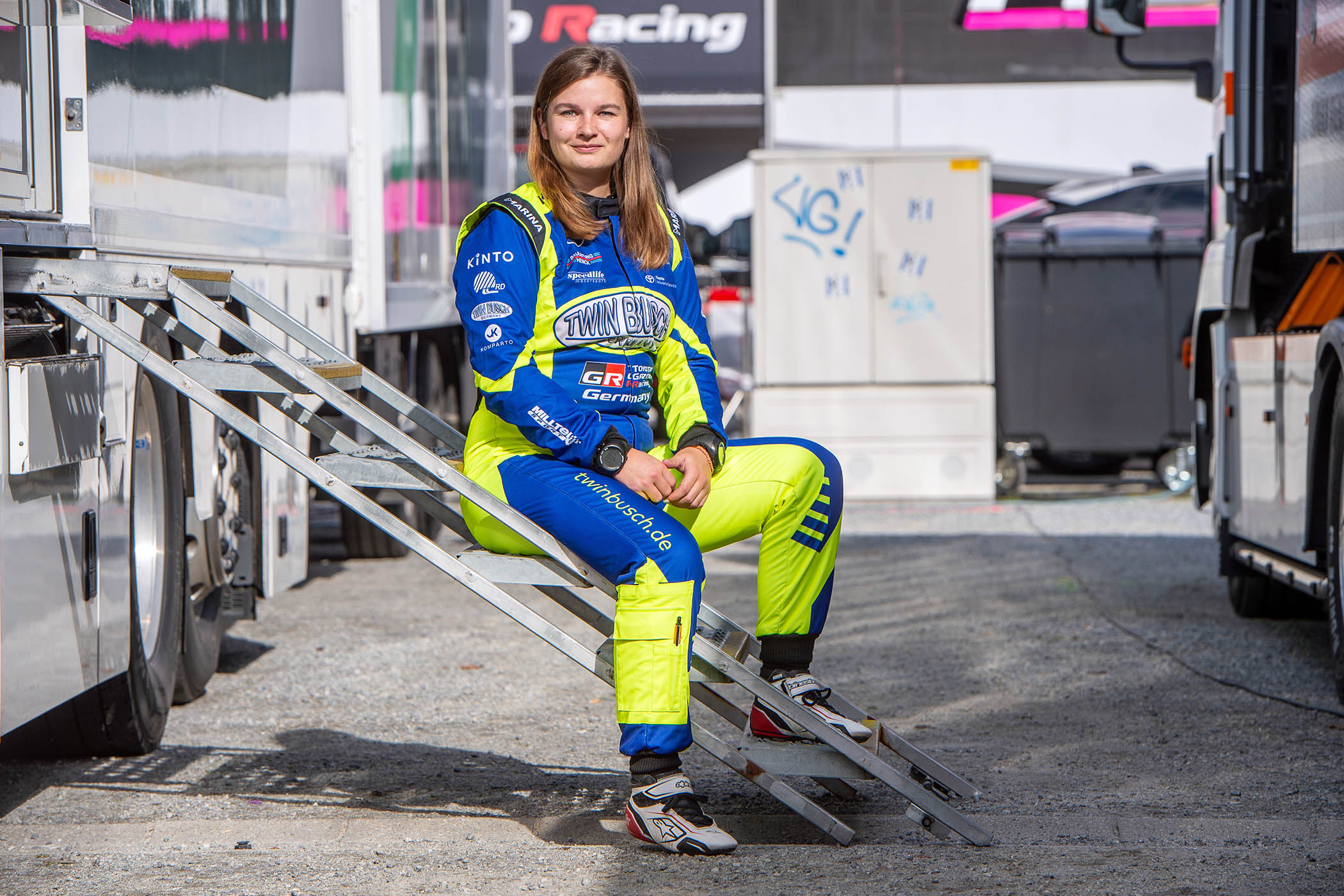
Rally car co-driver Jennifer Lerch at the FIA World Rally Championship
Schönborn drives in the Junior World Rally Championship (JWRC), where some of the strongest rally drivers under 30 compete in a truncated five-stage version of the WRC series. Schönborn is focused on building her confidence in the car this season, having won the first edition of the women-only Beyond Rally Driver Development Programme to gain a coveted, fully-funded seat in the JWRC this year. What impresses the most is that Schönborn only celebrated a year of rally in August.
“I’m a bloody beginner. Everything was completely new,” she said of her first competitions in Beyond Rally. “Driving on ice, driving on the gravel, and also driving on tar. I needed to learn everything from the beginning.”
She is smart and fast on the road, putting her full-time job as a systems engineer to good use when approaching a stage. This asphalt rally is a rare meeting of nations – co-hosted by Germany, Austria and the Czech Republic over 306km of varied terrain.
Schönborn may appear at a disadvantage, with a fraction of the rallies under her belt compared to her category line-up, but she has a point to prove. At this stage, winning is not the goal, rather she aims to gain experience with the hopes of securing a seat for next year. If anything, she says her unorthodox route into the sport should encourage other young drivers – and more women – to compete.
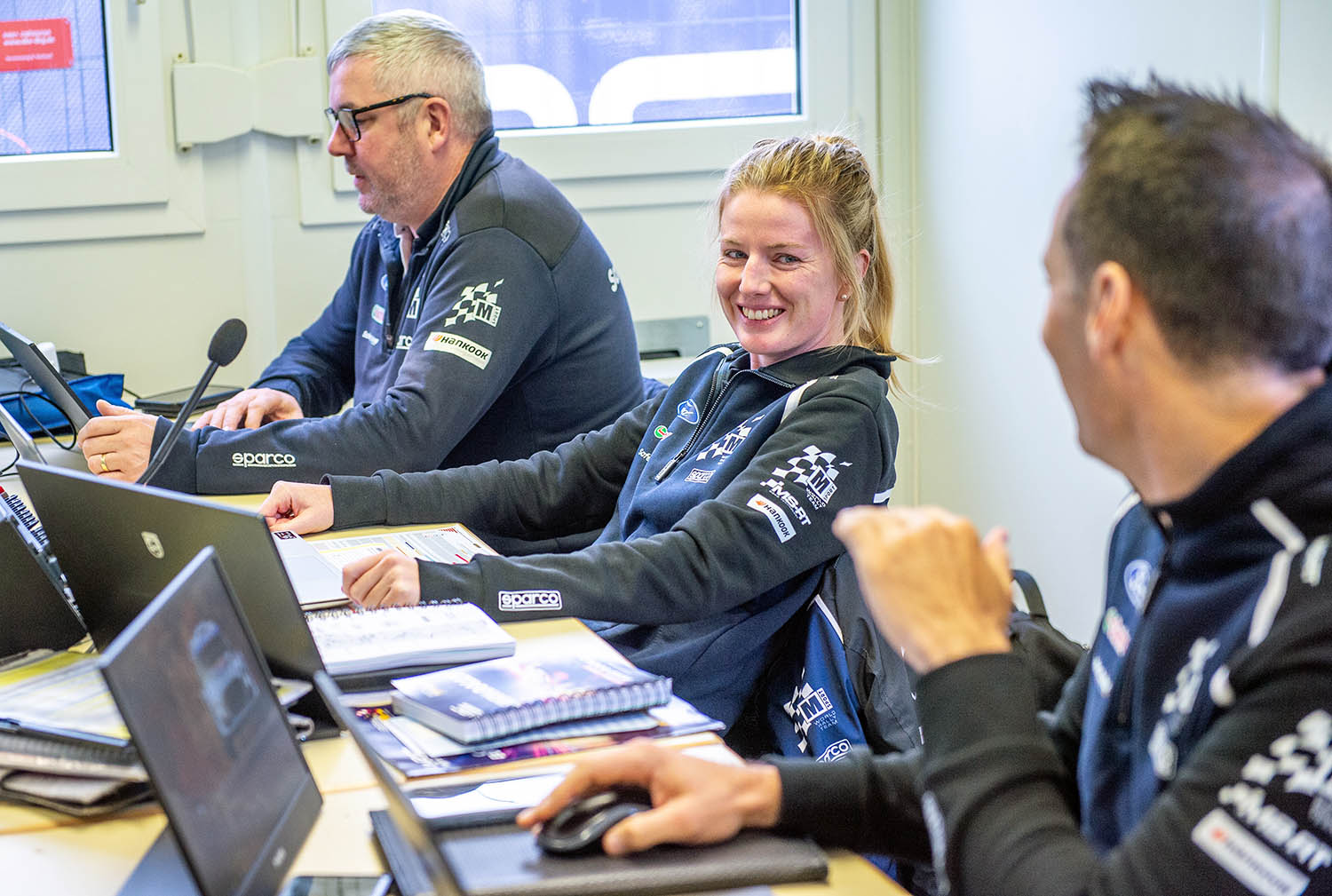
British motorsport engineering company M-Sport coordinator Samantha Gray at her work station with colleagues in the engineers office
“In the end we’re all wearing a helmet and we’re racing against each other. So I want to be as fast as them,” she says.
Schönborn is an emblem of hope for the future of female rally drivers. There have been a handful of successes for women in rally in the last 20 years, but the consensus is that more programmes like Beyond Rally and the all-women crew Iron Dames are needed to develop female drivers. The biggest challenge is starting – and securing the finance.
Even with her funded seat, Schönborn relied on both her engineering job and acquiring the driver’s lifeline of sponsors to meet the €450,000 (£390,000) cost for this season. Finding the time and funds is crucial for teams to test each stage ahead of the rally. There is a danger the wealth gap inherent in the sport hinders talent, particularly female, from reaching their potential.
In the world of the service park, women like Georgina Bentley were practically born into rally. Now a crews co-ordinator and sports therapist for M-Sport, Bentley started as a driver in her teens, where she rallied against current M-Sport driver Josh McErlean.
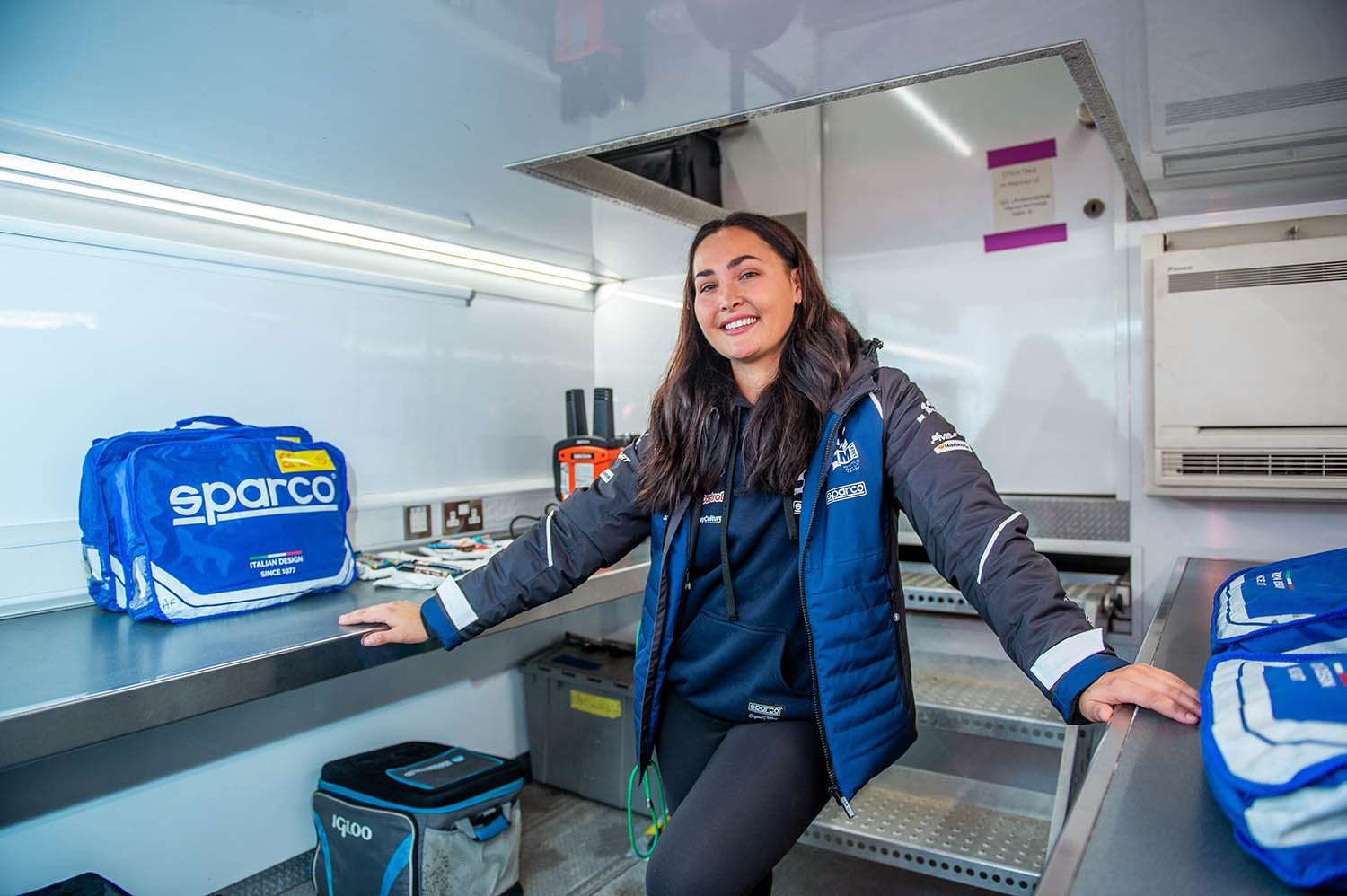
Crews co-ordinator Georgina Bentley at work in a truck portacabin at the Parts Control Hub
Bentley advocates rethinking the norm of a male-dominated rally: “You never want it to be overlooked for women, there is opportunity and it’s not just about being given a chance that women are here.”
In a high pressure environment, where rallies are back-to-back around the world, the co-ordinator faces the brunt of the tough moments when disappointed drivers lash out. It’s the less glamorous nature of Bentley’s job, but she tries to galvanise drivers coming in at 6am with a dose of heavy techno music. “We’re arguably too close. Sometimes they think I’m their personal punching bag,” she adds with a tight smile.
Samantha Gray, sporting co-ordinator at the noticeably gender-balanced M-Sport team, oversees the logistical migraine of a WRC competition. As a champion co-driver in New Zealand she was surrounded by women in the sport.
For Gray, there is no reason why women should not suit the world of club rallying. “It’s addictive,” she says. “Everyone will do anything to help you keep going. And it’s basically this big adventure of trying to get this car through these stages.”
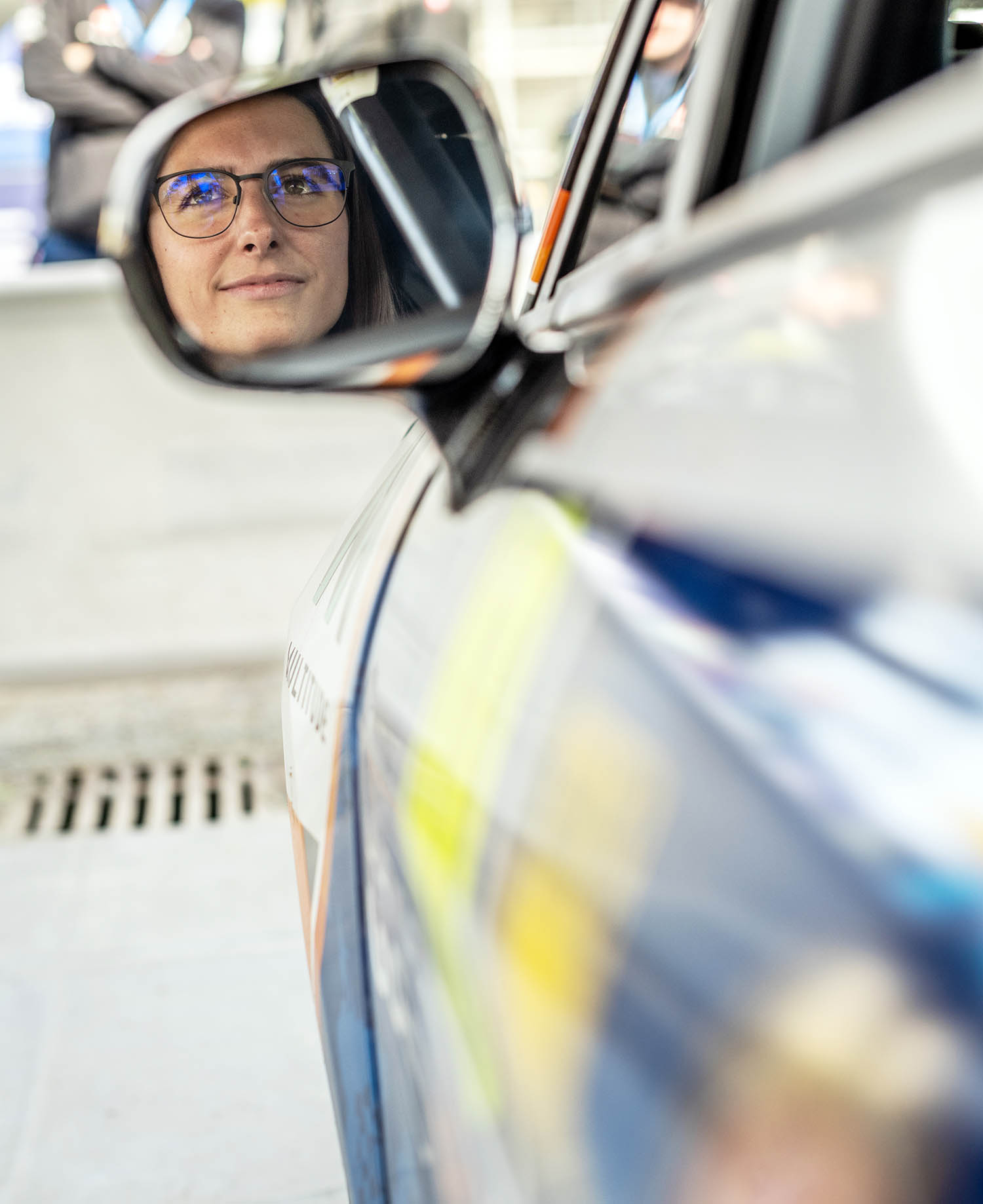
German born rally car driver Claire Schönborn is competing in the FIA World Rally Championship
Rally and women are rarely uttered in the same breath without a reference to Michèle Mouton. The legacy of the “queen of speed” is omnipresent in the sport, but some of the momentum she helped pioneer was lost until the likes of Beyond Rally came along.
Mouton charged onto the race scene relatively late, taking the driver’s seat aged 22, and smashed through barriers to make history as the first woman to win a world championship title in 1982. “Motorsport was a man’s world …. a little bit like today,” Mouton said in a 2023 documentary. While there may never be another quite like Mouton, Cyril Abiteboul, team principal of Hyundai Motorsport, told The Observer that the sport needs to become more accessible, with a larger pool of drivers for women to rise through. “Women are currently the minority in motorsport. I think we cannot avoid positive discrimination,” he said. His solution: “financing, financing and financing women.”
‘We’re all wearing a helmet and we’re racing ... so I want to be as fast as them’
Claire Schönborn
Investment in a rally driver is high-risk, but as WRC regulations evolve to bring more drivers into the competition, teams will inevitably diversify their entries. “It’s not just about trying, [the female driver] must be talented and work very hard, but it’s up to the manufacturers to play a role in this,” Abiteboul said.
Beyond Rally has not yet been confirmed for another series, and may change its structure as the step up to international level has been seen as too large a leap. Nearly 100 drivers applied for the 15 spots in the inaugural season, and the mood in driver development is to keep targeting young talent.
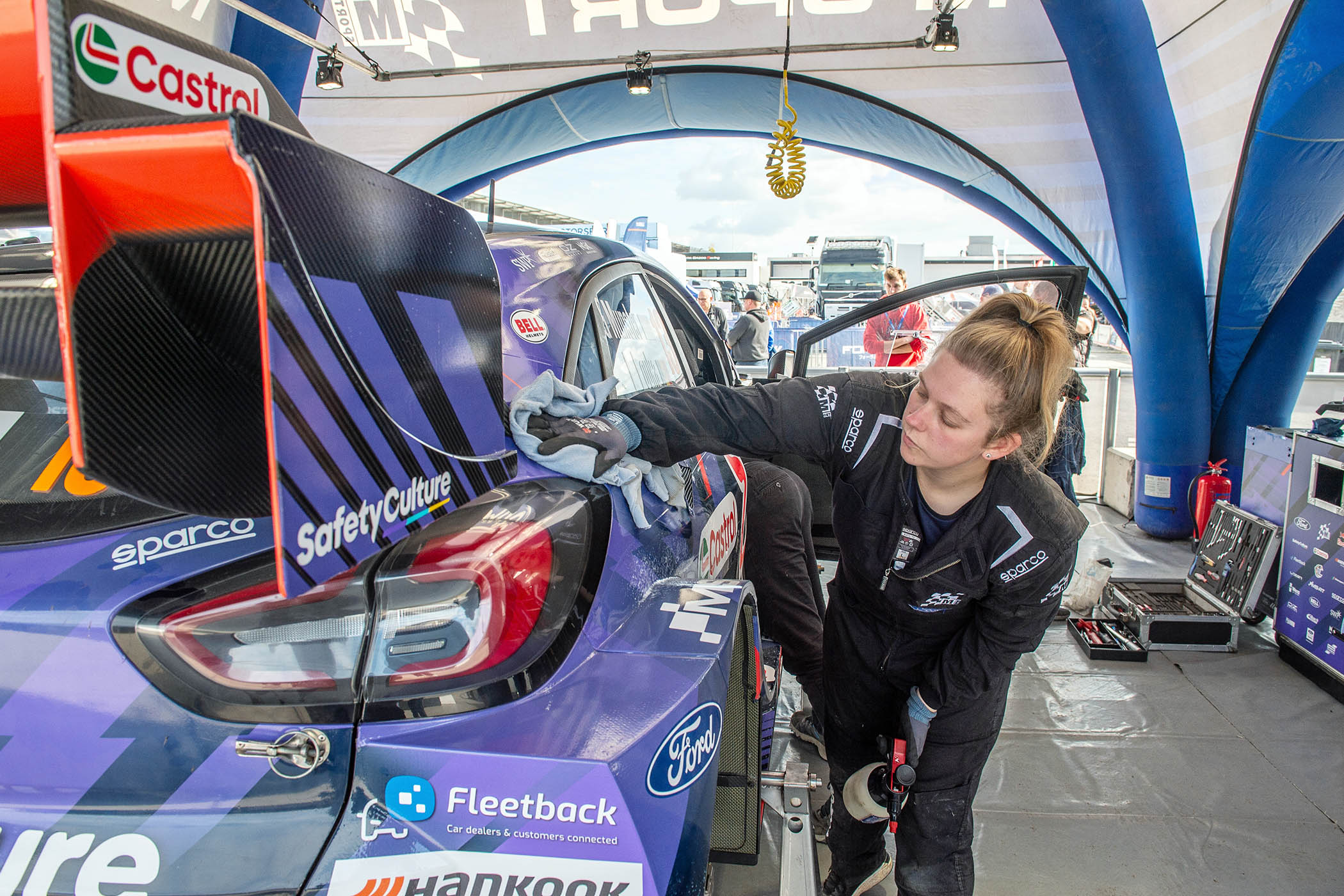
M-Sport rally car mechanic Hayley Harrod at the FIA World Rally Championship
One way into the sport can be through co-driving, in which drivers can gain experience at a younger age and with a lighter financial burden. This WRC season, hopes had been resting on the return of a female co-driver to Rally1, but Toyota’s Sami Pajari opted for a male co-driver when he moved up to the level this season, much to the surprise of his former co-driver Enni Mälkönen.
Rally2 co-driver Jennifer Lerch was still riding high off her new pairing’s first win three weeks ago when we spoke. Her role is to be the brain of the car: to read the often near illegible pre-prepared pace notes, calculate the time card against the clock and anticipate at least three turns ahead.
Women have always proved they can succeed as co-drivers, according to Lerch. So then what discourages young women from the sport? “People always say that girls are not that fast,” she says. “But you can see it with Claire. She’s fast.”
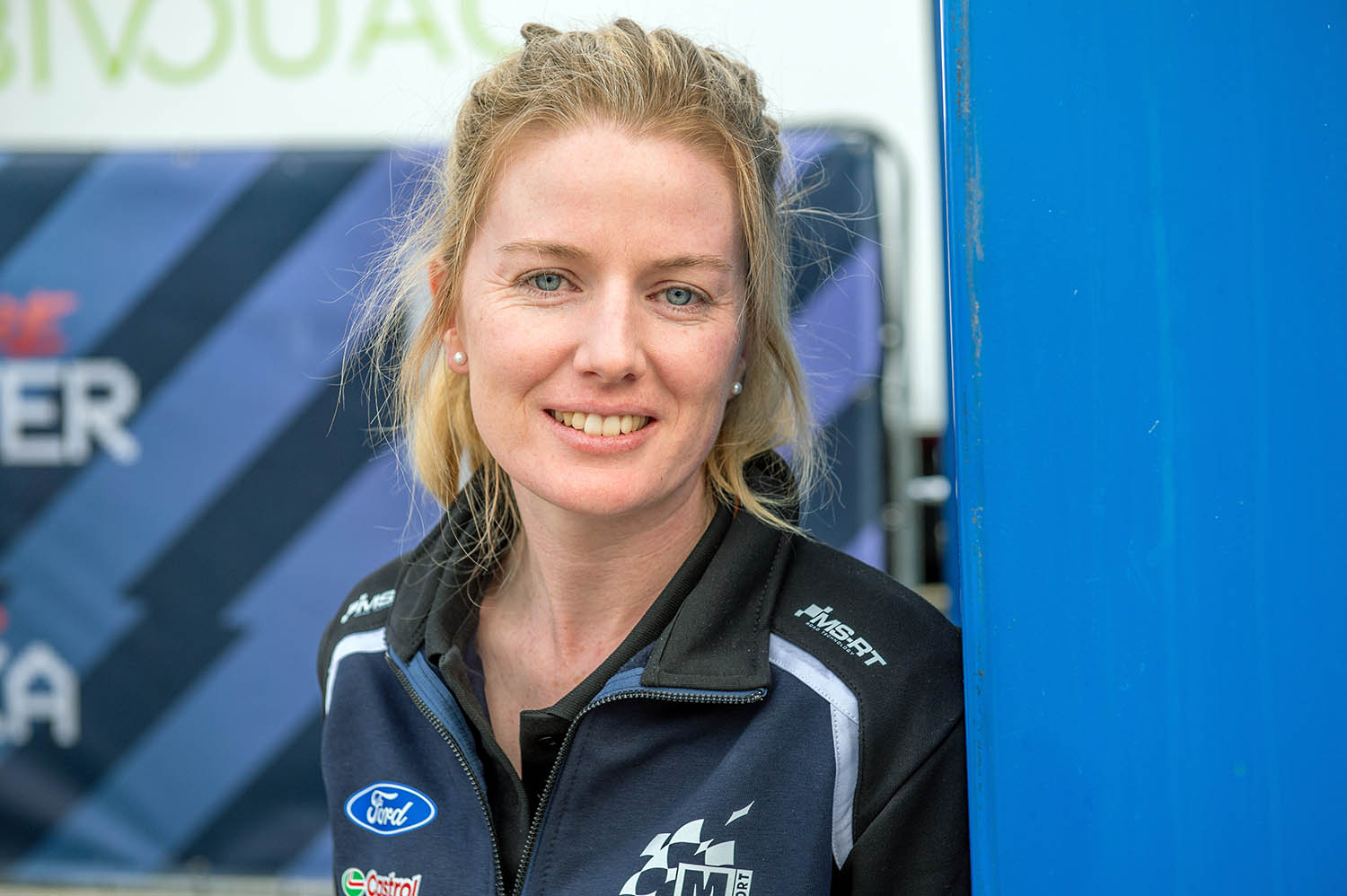
British motorsport engineering company M-Sport coordinator Samantha Gray
Lerch comes from a family of driving champions, and began co-driving aged 14. She learnt from printed maps her mother, a former co-driver, gave her, and through years of co-driving with her father.
As the loud revving signals the return of cars back into the park, tyres are rolled out of vans and cars lifted up, with fans peering over the barrier. Schönborn jumps out of her car for the service.
Her words from the evening before feel all the more potent: “ I think the hardest point at the moment is that I cannot live on what I’m doing in motorsport at the moment. I do not think everyone struggled with the same problems as me this year,” she said.
“There’s no reason why a woman should not do the same as the men. Do you need to have a specific physique? No. The main point is to get the money, train and get the chances like I have.”
